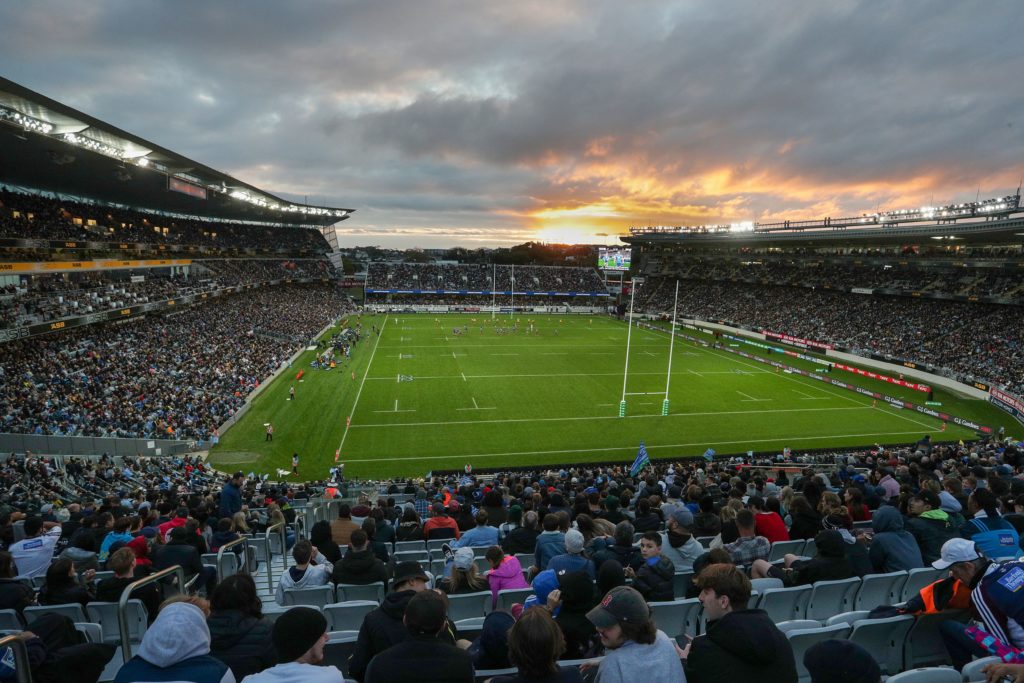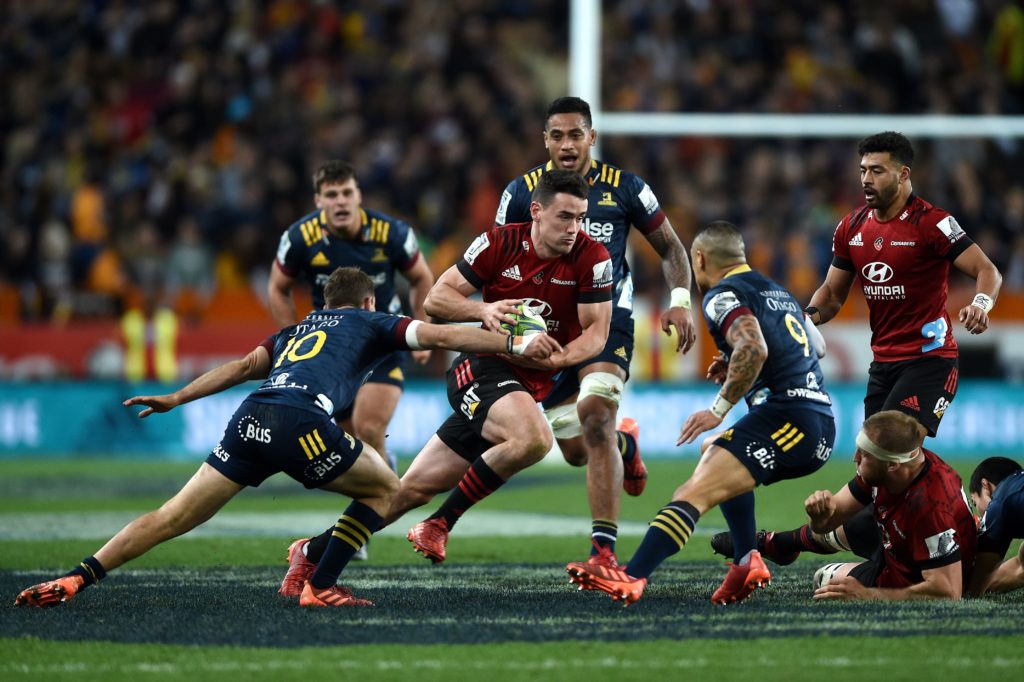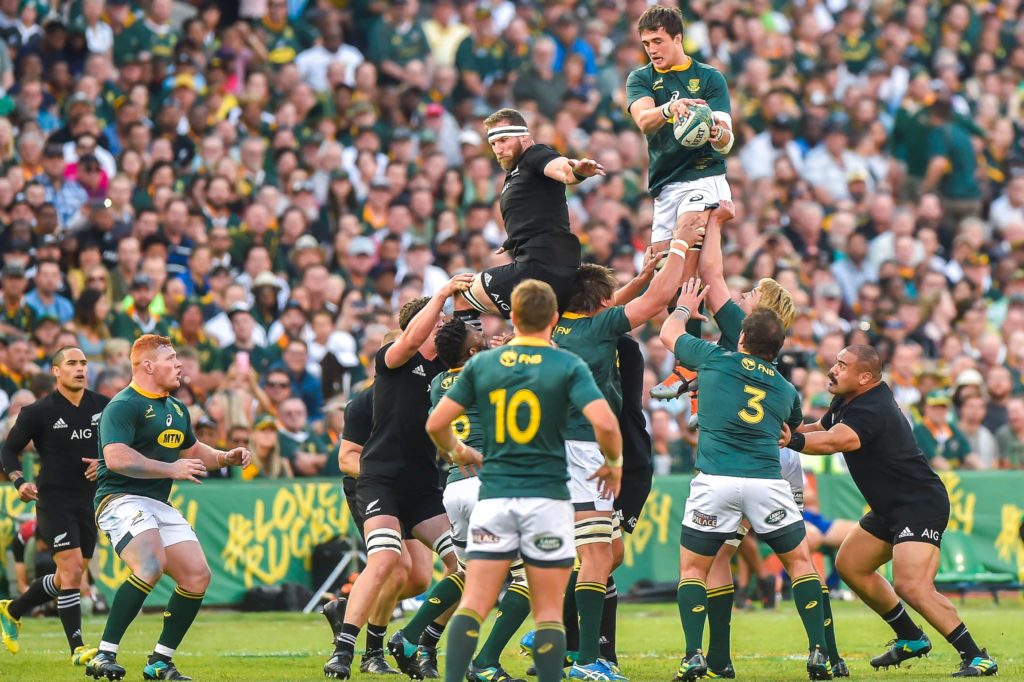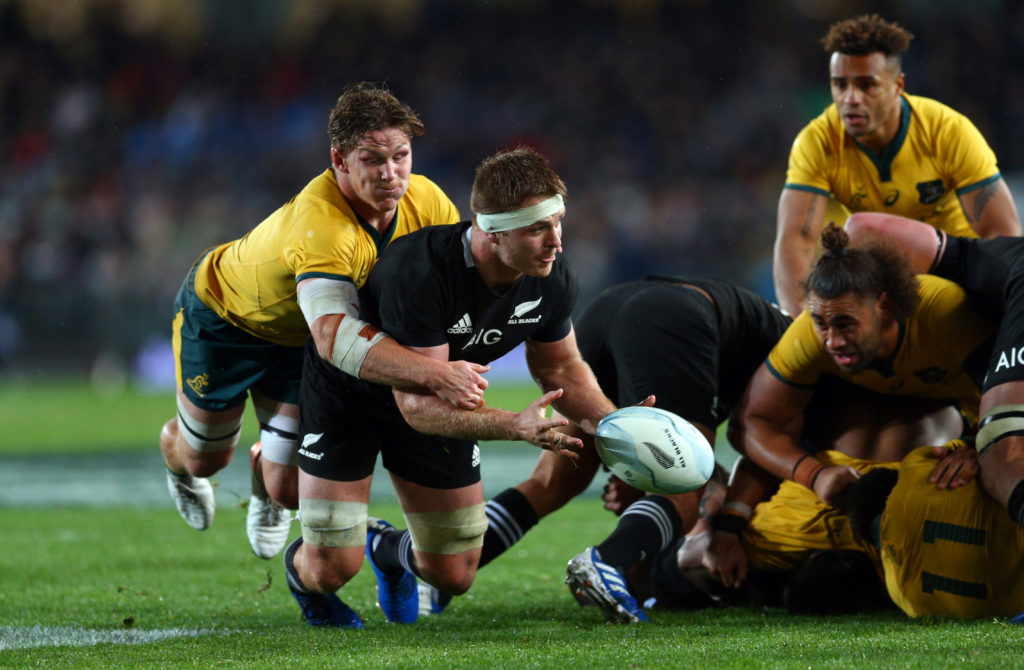New Zealand’s professional rugby market wasn’t out of control before Covid-19 hit, but it was plagued by greed, self-interest and a bloated administration.
There were mad things happening: unfathomable decisions that were inflating costs, duplicating roles and building a culture of entitlement among players, to the extent that rugby’s long-held, treasured place as the sport of choice for young New Zealanders was under threat.
Provincial teams were competing with Super Rugby sides for emerging talent, driving the prices up when the money was all coming out of the same pot.
Players were able to sign extended contracts that were worth almost $1m a year which also came with phenomenally generous sabbatical clauses that let them play one or even two seasons in Japan at $1.5m a time.
Warren Gatland was able to strike a four-year deal where he would be at the Chiefs in 2020, coach the British & Irish Lions in 2021 and return to Hamilton for another two years. It was mad – cakes galore and they were all being eaten.
Super Rugby clubs, once reluctant to be scouting for schoolboy talent, were happily signing teenagers on packages above the national average wage and there had been dramatic headcount inflation which led to a 70 per cent rise in staff at New Zealand Rugby between 2015 and 2019.
This could have been justifiable if the economics were stacking up. Yet balance sheets everywhere were showing red, stadiums were mostly empty and playing fields increasingly deserted as New Zealand’s youth were turning their backs on rugby.
Between 2014 and 2018 there was a 17 per cent drop in the number of boys playing rugby at high schools largely because half the 13-year-olds in the country wouldn’t be playing when they were 18.
NZR lost a combined $9.2m in 2018 and 2019 and has only made a surplus once in the last five years. Super Rugby clubs, despite taking private investment, have all budgeted to just break even since 2016 and in the last five years various provincial unions have had to be bailed out with six-figure emergency loans – and that’s after they have received millions in grants.
Yet balance sheets everywhere were showing red, stadiums were mostly empty and playing fields increasingly deserted as New Zealand’s youth were turning their backs on rugby.
Collective losses have been piling up yet payments to the top players have increased by about 20 per cent, with the elite now on contracts that are worth about $1 million a year in comparison with the likes of Richie McCaw and Daniel Carter who were paid about $800,000.
The All Blacks lost their number one ranking in 2019 and were dumped out of the World Cup in the semi-final despite spending $7.6m more than they budgeted on that year keeping talent in the country.
And possibly most damaging of all, Super Rugby had hit new lows in regard to attendance in early 2020.
Crowds have consistently dropped since 2012 – the sharpest decline being 25 per cent which occurred between 2015 and 2017 when the average attendance fell from 19,163 to 14,436.
Some of the games before the Covid-19 lockdown were played in front of barely 5,000 people.
Fans had voted with their feet. They were saying no to a Super Rugby competition that was riddled with weak teams, played in multiple time zones and plagued by a chronic inequity as a result of Sanzaar, in all its wisdom, having guaranteed the winners of each geographical conference home play-off games.

Rugby in New Zealand was in dire need of a reset and while no one wanted it to be achieved in such dramatic terms, Covid-19, ironically given it is a virus, has actually proven to be the cure to many of New Zealand rugby’s ills.
The game crawled into lockdown in terrible shape and emerged into what everyone thought was going to be a post-Apocalyptic world.
The players agreed to freeze a total of $25m of payments this year – meaning most big name athletes were looking at a 50 per cent pay cut.
New Zealand Rugby posted a $7.5m loss for 2019, predicted it would lose around $120m of income in 2020 and that it was making 50 per cent of its 180 staff redundant.
With the border shut, Super Rugby, if it were to be resurrected, would be a New Zealand-only competition and as plans initially formed, the games were going to have to be played in empty stadiums due to restrictions on mass gatherings.
The game crawled into lockdown in terrible shape and emerged into what everyone thought was going to be a post-Apocalyptic world.
The situation looked dire, hopeless even until there was a near Hollywood-esque moment just five days before Super Rugby Aotearoa kicked off on June 13 and the whole game of rugby in New Zealand was re-born.
The government lifted restrictions on mass gatherings and while the Coronavirus pandemic had brought economic catastrophe, significant pay cuts, and heavy job losses it also brought New Zealand rugby happiness.
Eden Park was sold out for the Blues clash with the Hurricanes and the average attendance in the first two weeks was 26,000 – this was a 105 per cent increase on the first two rounds held before the lockdown.
It wasn’t just novelty and scarcity bringing people back to Super Rugby, it was the quality of the football, the fan-friendly 3.30pm Sunday afternoon kick-off slot and the intense nature of the format where five, intensely competitive Kiwi teams were pitted against each other.
No one was missing the Sunwolves or Jaguares, or even the Reds and Rebels as evidenced by the continued strong broadcast audiences and attendances.
The Blues sold out their last game against the Crusaders – although it was cancelled due to a second Covid-19 outbreak – and Sky TV revealed they had enjoyed a 65 per cent lift in viewing figures in Super Rugby Aotearoa compared with Super Rugby 2019.
So many factors were combining to create a virtuous cycle. It wouldn’t be strictly fair to say a culture of entitlement had existed among the players before lockdown, but plenty of them had their eye on their bank balance, next deal and started conversations with, “what’s in it for me?”.

When they came back to play in June, they were chastened. They were taking nothing for granted.
Rejuvenated Blues captain Patrick Tuipulotu summed it up best when he said: “I’m just grateful to still be playing rugby and that we are all still being paid. No one lost their contracts and that has put us in good heart.”
The Covid-enforced lockdown has reconnected the players with the essence of the game and a sense of gratitude has pervaded.
Before the competition kicked off, Dan Carter was revealed as a new signing by the Blues. One of the greatest players the world has known was happy to be paid just $1,800 (£900) a week, an extraordinary drop from the $2 million a season he’d been earning with Kobe Steelers.
He just wanted to play, to give something back and he didn’t care about the money. The same was true of Kieran Read, who was able to reach an agreement with Toyota Verblitz to allow him to play for Counties Manukau in the Mitre 10 Cup.
Read, despite his long association with Canterbury and the Crusaders, grew up in South Auckland, and was inspired to play rugby after his father took him along most weeks to watch the great Counties team of the mid-1990s which had none other than Jonah Lomu on the left wing.
The former All Blacks captain had always wanted to play a provincial campaign with Counties and so made it happen.
“I am back in New Zealand at the moment and to be honest, very fortunate to have this opportunity,” Read said once he’d confirmed his contract.
“It is a place that is dear to my heart, it is where I grew up and to try to give back and much as I can to the region, is what I am looking forward to doing.”
Kieran Read, ex-All Blacks skipper, on his return for Counties Manukau
“It ticks a few boxes for the body, but also for me to give back, because I guess that is where I am in my career.
“It is a place that is dear to my heart, it is where I grew up and to try to give back and much as I can to the region, is what I am looking forward to doing.”
Carter’s and Read’s selflessness was symptomatic of a wider truth that cultures and attitudes have changed.
The heavy interference from New Zealand Rugby’s high performance department also disappeared post-lockdown.
Few things used to undermine Super Rugby more than the strict NZR-imposed requirements that demanded All Blacks miss at least two games a season, couldn’t play more than five weeks consecutively and were capped at a maximum of 180 minutes game time in the first three weeks.
Players, coaches, broadcasters, sponsors and fans hated it and a central pillar in the success of Super Rugby Aotearoa was the consistent appearance of all the big names.
The best players were on the park every week and coaches weren’t spending time hinting at unwanted personnel changes to come. The negative, apologetic narrative was as much a mood killer as the actual non-appearances of the best players.
The vibe was different in Super Rugby Aotearoa. It was intense, authentic and pure and the rugby produced was outstanding. It was next level in fact, unbelievably quick, skilled and physical.

It was the sort of rugby that the Sanzaar alliance had always craved for Super Rugby but had never been able to produce in any of the cross-border formats and certainly not since they expanded beyond 12 teams which they did in 2006.
There was drama and spectacle, flowing attack, crushing defence and, interestingly, nothing but praise from the Northern Hemisphere.
The competition in its earliest days was branded pyjama rugby by the sceptical North, who thought they were seeing too much frothy milk and not enough coffee.
Super Rugby Aotearoa had crunch and set-piece excellence and, critically, it also had sensible refereeing as the tournament kicked off with two key directives which were to be tough on the offside line and entry to breakdowns.
There were 58 penalties in the opening weekend – the majority of which were for teams not retreating behind the back foot on defence or coming in at the side of a ruck.
By round three, the number of penalties halved as teams adjusted and the rugby flowed. For the last few years international coaches had been complaining about the lack of space on the field and the illegal means by which defensive teams were imposing themselves.
New Zealand, sick of all the moaning, actually did something about it and Super Rugby Aotearoa created a framework for attacking rugby to flourish again.
Blues defensive coach Tana Umaga felt it was a critical shift as he, like many, had been at the World Cup in Japan and seen how rush defences and box-kicking were producing the sort of rugby that didn’t engage non-purists.
“I think we have learned that it can’t be like that because that is not what people want to see,” said Umaga.
The ball is quick, it is off the ground and it is hard for us as defensive units to get set and come off and do those things. There is a big onus on the referees to be consistent around the application of the rules.
Tana Umaga, Head Coach, the Blues
“They want a balance and we have to think of the great opportunity we have now with the way we are interpreting the laws. The ball is quick, it is off the ground and it is hard for us as defensive units to get set and come off and do those things. There is a big onus on the referees to be consistent around the application of the rules.”
No one was quite sure before the competition kicked off whether it would be a roaring success or giant failure. When it turned out to be the former, the realisation dawned on New Zealand Rugby that they had something worth keeping.
Super Rugby as it had stood in February was horribly broken, but New Zealand now had the blueprint to fix it.
For 25 years New Zealand convinced itself it was the poor man of the Sanzaar alliance. The argument was made that a country of barely five million people did not have the population or economic base to run its own professional competition and hence New Zealand needed to be in bed with Australia and South Africa.
New Zealand essentially cast itself as Cinderella, letting its two sisters go to the ball year after year. When South Africa and Australia wanted more teams, they got them. When Australia wanted a bigger slice of the financial pie, they got it.
New Zealand compromised and conceded for a quarter of a century despite the overwhelming evidence that it was the real economic and rugby engine of the competition.

New Zealand’s viewing audiences are significant, their broadcast deal is as good as any in the world and the Blues, who generate between $12m-$14m a season are arguably Super Rugby’s richest club.
New Zealand teams have won 17 titles between them and their domination has been almost total, so with cross-border travel uncertain for the foreseeable future and Super Rugby Aotearoa having worked so well, NZR decided it was time to take control.
Global travel restrictions and uncertainty about when or even if they will lift effectively killed the notion of South Africa being part of any future Super Rugby discussions.
As much as that was a practical reality imposed by the wider geopolitical landscape, it’s also true that NZR had endured enough of South Africa’s constant threats over the years to break out of Super Rugby and strike a new alliance with one of the major European leagues.
The situation in regard to Australia was more open and fluid. Since July the respective Governments of New Zealand and Australia have been discussing a trans-Tasman bubble.
Those talks went on hold in August when a major outbreak hit Victoria but there is still a genuine possibility of relatively unrestricted travel between the two countries by March next year, making a cross-border competition viable.
After an extensive review, NZR unilaterally took Super Rugby out of Sanzaar’s control and declared it will run its own competition in 2021 and beyond.
But if there is to be a working Super Rugby relationship between New Zealand and Australia, it will be entirely on terms dictated by the former.
After an extensive review, NZR unilaterally took Super Rugby out of Sanzaar’s control and declared it will run its own competition in 2021 and beyond.
The new format will have between eight and 10 teams – five from New Zealand, one representing Pasifika and between two and four from Australia if they make successful applications to be involved.
And this is where the tectonic plates have shifted. New Zealand is no longer willing to accept equal partnership status when it feels it is bringing so much more to the table in terms of finance, audience and playing resource.
Under the existing Sanzaar agreement, New Zealand, South Africa and Australia pool their broadcast income and split it evenly.
But having agreed a five-year deal worth a reported $500 million with Sky TV and Australia not yet with a broadcast contract for 2021, NZR was not willing to pool income any more.
Australia won’t be able to live off New Zealand’s broadcast riches. And however much Australia want five teams to be involved, they won’t be getting their wish.
New Zealand doesn’t believe Australia have the resources to successfully run five and argues that so many of Super Rugby’s problems are linked to the expansion of the competition.
Since the Rebels were granted a licence in 2011, Australian teams have struggled to the extent that in 2017 they didn’t win a single game against Kiwi opposition and their win ratio between 2016 and 2019 was just 19 per cent.
Former All Black Richard Kahui ended up joining the Western Force this year to play in Australia’s revamped domestic-only Super Rugby and said: “Coming back here I expected it to be super physical and super fast but in actual fact, the level of rugby in the Top League in Japan is probably on a par if not slightly better than here at the moment at Super Rugby level.

“That’s because of the quality of foreign players they have in Japan.”
Rugby Australia has tried to project indifference since New Zealand broke away and claim they have private equity queuing up to back their own proposed eight-team version of Super Rugby.
Maybe they do but reports are also emerging that the initial offers to own Rugby Australia’s future broadcast rights are coming in at less than half the existing deal.
The reality is hitting Rugby Australia hard that they may have no choice but to accept that their best bet is to join Super Rugby Aotearoa, even if that means culling at least one of their teams and having to fund their existence with their own revenue rather than having access to New Zealand’s.
And a second truth is beginning to hit home that Australia can’t risk destroying their relationship with New Zealand as while the two nations may have divorced as it were at Super Rugby level, they remain very much married when it comes to test football.
New Zealand have made a major concession by agreeing to play their first Rugby Championship match in Brisbane to enable Rugby Australia to honour a contract they signed with the Queensland State Government to play a Bledisloe Cup test there.
That agreement means the All Blacks will quarantine in New South Wales when they arrive in Australia on October 25 and then fly to Brisbane on the morning of November 7 to play a test there that night.
While New Zealand has been flexible and accommodating, Rugby Australia has held a belligerent stance in regard to travelling for Bledisloe Cup tests. The first two were scheduled to be played in New Zealand on October 10 and October 17, which would leave both teams ample time to quarantine in Australia ahead of the November 7 start for Rugby Championship.
Wallabies coach Dave Rennie argued in mid-September that New Zealand’s stricter quarantine rules would make it impossible to play on October 10 which led to the Government loosening restrictions almost the next day.
There has been an awakening that New Zealand is the big brother in its relationship with Australia and that it can dictate terms and never agree to anything it sees as less than ideal.
Even when these new rules afforded Australia 13 full days of preparation, the Wallabies still hinted that wouldn’t be enough for them to agree to play on October 10.
That drew a terse response from new All Blacks coach Ian Foster. “We have heard the criticism from overseas but at the same time we have been working hard to make quarantine as effective as possible and we feel we have done that,” he said.
“We have heard them and we have answered them. We are giving them a preparation that is at least equal to ours and I don’t see how you can get any fairer than that.
“If you look at a fair playing field, we have both got new coaches. No one can say that we need more time because we are new.
“We have both had a full domestic rugby season so we are on an equal footing there. I expect them to hop on a plane and come and play us that weekend [October 10-11].”
And later that same day, came yet more evidence of the power New Zealand exerts and the happiness it has found. The tests were confirmed for the weekends New Zealand wanted and they are both going to be played in the afternoon.
New Zealanders have craved afternoon test football for decades and now, for the first time in 20 years, the All Blacks will play a Bledisloe Cup in daylight.
What’s happened since Covid hit, is that New Zealand has reached a new happy place, where everyone loves rugby again.
There has been an awakening that New Zealand is the big brother in its relationship with Australia and that it can dictate terms and never agree to anything it sees as less than ideal.
Covid’s arrival hasn’t been a disaster for New Zealand at all, it has been a golden opportunity to reset and reconnect.



Comments
Join free and tell us what you really think!
Sign up for free